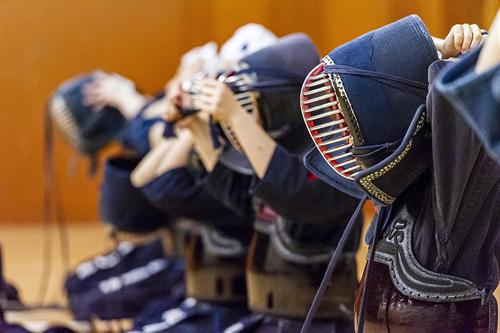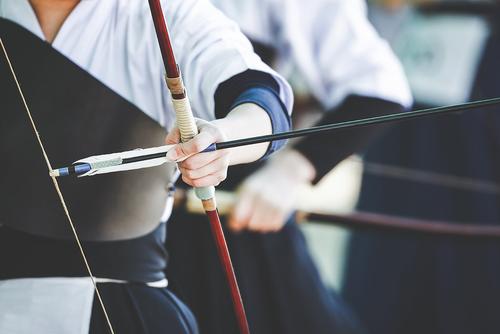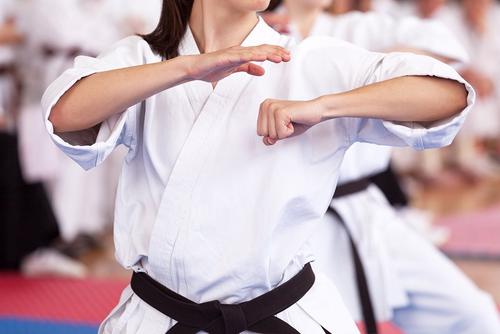When you hear the word "martial arts," some people may think of judo or karate, while others may imagine kendo. In fact, none of these are wrong, but it may be a bit of a stretch to say that just because you practice judo or kendo, you are a martial artist.
Here, we explain what is called martial arts, its main types, and the important concept of "zanshin" in martial arts.
Types of Martial Arts

There are many different types of martial arts. Below we will provide a brief overview of the nine types that are generally considered to be "martial arts."
judo
Judo is one of the most well-known martial arts, derived from "jujutsu." It developed as a martial art during the Edo period, and its rules involve throwing techniques and joint locks, with the winner decided by a judgement such as "effective" or "ippon." Judo has been a popular martial art in physical education classes since before martial arts became a compulsory subject in junior high school physical education.
kendo
Kendo is another martial art that many students experience in school clubs and classes. Players wear protective gear and wield bamboo swords, competing in a three-round match. It is also one of the martial arts that developed as training for samurai warriors.
Kyudo
Kyudo is a martial art that became popular after the Meiji period. Players use a large bow to aim at a target, and scores are awarded based on where the arrow hits. The closer you are to the center of the target, the higher your score, and this requires a high level of concentration.
Sumo
This is what is commonly known as "sumo," a martial art in which wrestlers wear mawashi (loincloths) and wrestle one-on-one in an enclosed area called a dohyo (ring). Since the sport first began in temples and shrines during the Edo period and gained popularity, the sacred rituals and rules remain to this day.
karate
The style of karate, in which participants wear uniforms and compete in matches, is similar to judo, but karate's history is relatively new, having spread from Okinawa to the rest of the country around the Taisho era. While judo involves competing in techniques such as "throws" and "holds," karate also involves attacks such as kicks and punches. Karate is closer to actual combat, but in competitions, the basis is "instantaneous" (avoiding direct attacks on the opponent). Individual events in which participants demonstrate karate forms by themselves are also well-known.
Aikido
Aikido is a martial art that is often confused with karate and judo, but it has the unique feature of being a practice-only art with no competitions. Aikido's history is newer than karate, and it was established by the martial artist Morihei Ueshiba around the early Showa period. Another distinctive feature of Aikido is that it allows you to control your opponent by knowing how to move your body, regardless of your physique, age, or gender.
Shorinji Kempo
Shorinji Kempo is often mistaken for the Chinese "Shaolin Kung Fu," but it is a martial art that originated in Japan. Founded by the Japanese martial artist So Doshin, it is a new martial art that was established in the early Showa period and is sometimes said to have been influenced by Shorinji Kempo, but it can be said to be closer to judo.
Naginata
Naginata is often thought of as a women's martial art, but it is said that it was originally a men's martial art that evolved into a women's martial art. It has something in common with kendo in that it is effective when the naginata hits the opponent's "men" or "do" while wearing protective gear and a uniform, but the sight of handling a naginata that is over two meters long is a spectacular sight, and it is still one of the most popular martial arts today.
Iaido
Iaido is a martial art that was developed to enable samurai to master the art of sword-wielding. It was formerly known as "the art of drawing the sword," and by practicing the flow from drawing the sword to sheathing it, one can hone one's sword skills.
What are martial arts? The difference between martial arts and sports is in "zanshin"

Martial arts are similar to sports in some ways, such as by moving the body and practicing repeatedly to determine victory or defeat in matches, but it is said that they are clearly different from sports in that they include the concept of "zanshin."
When it comes to understanding Japanese culture and ways of thinking, the words of foreigners who study Japanese culture can sometimes be a good reference for Japanese people. This article provides an overview of "zanshin" based on the ideas of martial artist and university professor Alexander Bennett.
Zanshin is the feeling of not letting your guard down against the next attack.
According to Bennett, zanshin refers to the mindset of not letting your guard down even after executing a technique, knowing that "you never know when the next attack will come." The teaching guidelines issued by the All Japan Kendo Federation also explain zanshin as "not letting your guard down after striking, and being ready and prepared to respond immediately and easily to any counterattack from your opponent."
For example, in kendo, if you shout in joy or make a fist and pump your fist after scoring an ippon, it may not be recognized as a valid hit.
Reference: Kansai University website Interview with Professor Alexander Bennett
"What remains even when you try to leave something behind is not Zanshin."
Bennett says he is disappointed with the current trend of focusing on victory above all else and thinking that it's okay to just win the gold medal, and says it's important to always keep a cool head.
Takano Saburo, known as the "father of modern kendo," also said that "zanshin is about leaving your mind without letting it remain," and that zanshin can only be achieved by not thinking about unnecessary things and by not losing focus on striking.
In martial arts, it is important to respect your opponent and to value etiquette.
The All Japan Kendo Federation states that "we will strive to teach in a way that respects the personality of the opponent and values etiquette in order to develop people with rich hearts." This mental attitude is valued not only in kendo, but also in judo and sumo.
If you can master the mindset of Zanshin, your sincere dedication to mastering the martial arts will lead to respect for your opponent and also help you to calm your own mind. Martial arts place great importance on this mental aspect, and perhaps it is precisely because they set themselves apart from regular sports that they fascinate people all over the world.
summary

What is generally called "martial arts" includes judo, kendo, karate, kyudo, sumo, naginata, aikido, shorinji kempo, and iaido, and includes those that developed from samurai combat training as well as relatively new martial arts with known founders. Martial arts have a concept of "zanshin" that differs from sports, and are characterized by the emphasis on not getting too excited or upset about winning or losing, but always remaining alert and performing the martial art to the fullest, maintaining a calm mind, and respecting the opponent.
This article has been partially re-edited by KARUTA from an article originally published on "Nihongo Biyori."
Any unauthorized reproduction or use of the contents, text, images, illustrations, etc. of this website is strictly prohibited.
